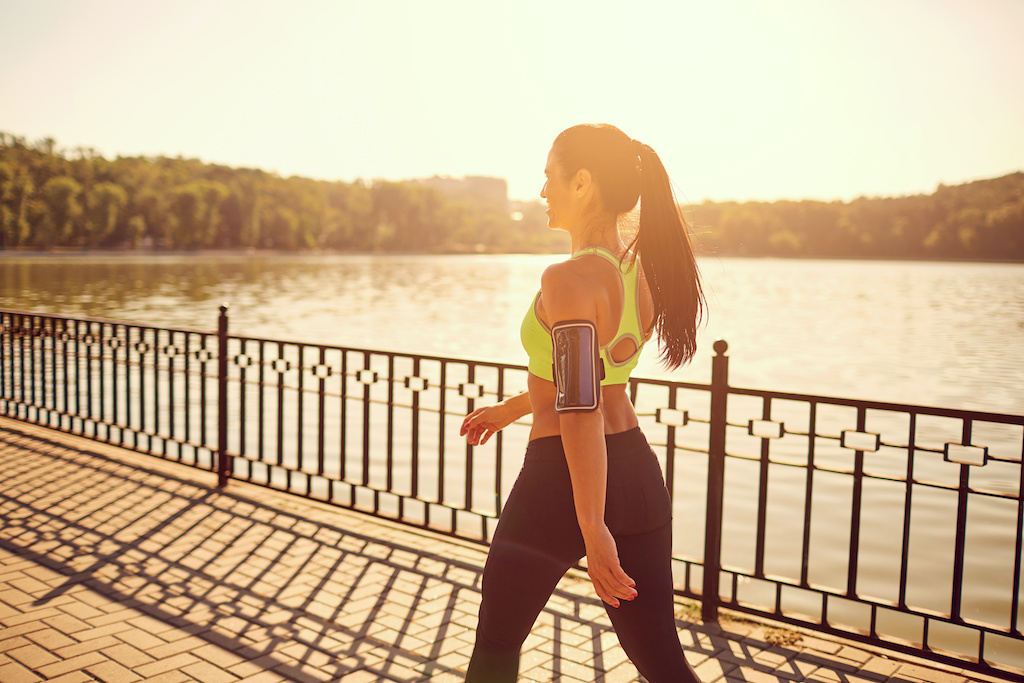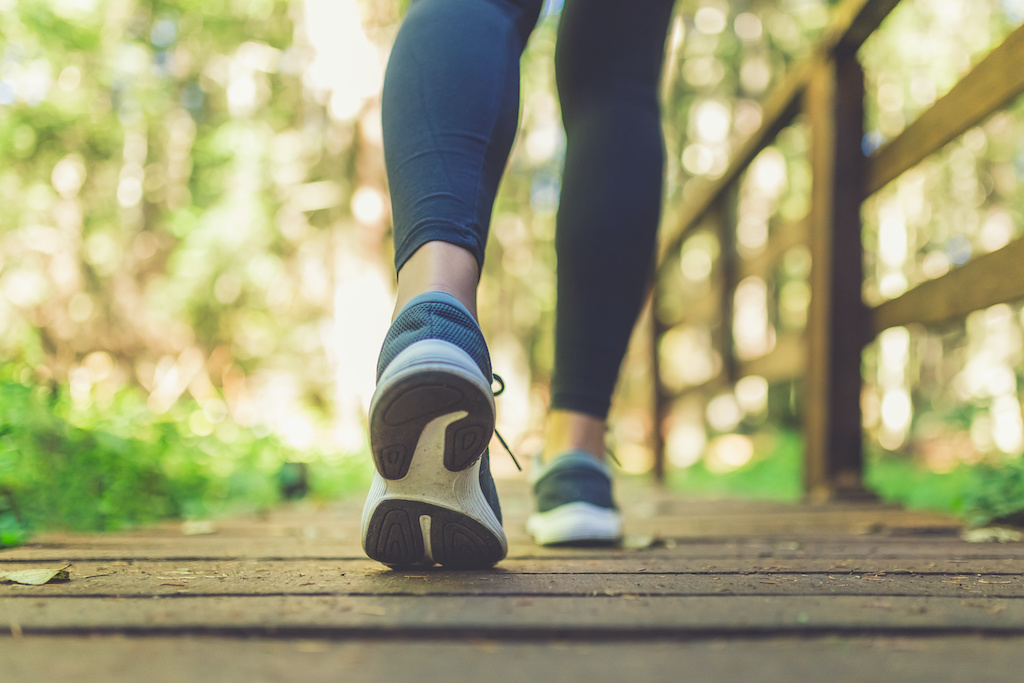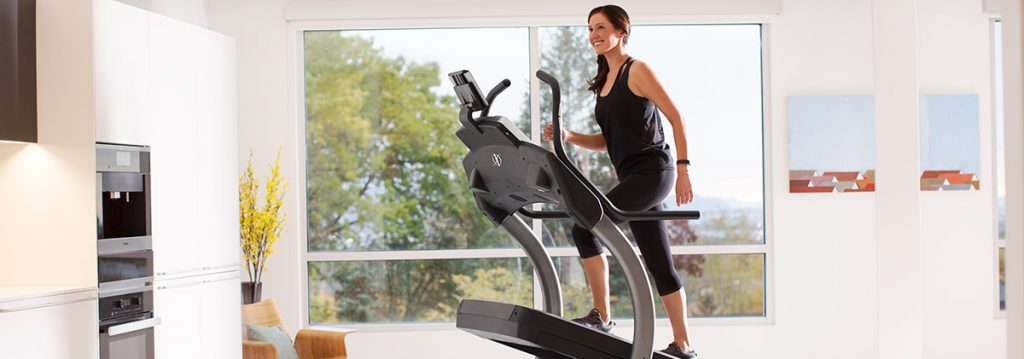Brisk walking is ideal for losing weight and staying in shape. It is accessible to everyone; even beginner athletes and those who haven’t been exercising for a long time. To reach your slimming goals, start gradually and, once you have a set routine, speed up your pace to burn more calories through brisk walking.
Losing weight with brisk walking

An activity often recommended to get back into exercise, improve physical health and lose weight, brisk walking is beneficial for everyone. It requires you to walk at a faster pace than normal walking, at a speed of at least 4 km/h. It involves the whole body, thanks to swinging the arms.
Fast walking offers many advantages:
- It strengthens the whole body through gentle motion and without causing major impact, which protects the joints.
- It can be practised at any age, alone or in groups, indoors on a treadmill or outdoors, so as to take advantage of its revitalising effects in the forest, the mountains or the city.
- It helps you to stay healthy by improving breathing and endurance, stimulating the heart muscle and boosting blood circulation.
- It is ideal for getting back into exercise after recovery or pregnancy, even if you suffer from back pain, as it helps to relieve this condition by strengthening the core muscles and abdominal belt.
- When practised regularly with long sessions, it promotes weight loss by drawing the energy needed for exercise from the body’s fat reserves.
Adjust your brisk walking sessions with your goals

Depending on your goals, creating a personalised walking plan will help you benefit from this workout and get results quickly.
A brisk walk to stay in shape
Consistency is key if you practise brisk walking to stay in shape. Walk at your own pace, without striving for speed at all costs: Only one factor counts; the number of steps you take per day or per week. Start with relatively short sessions, for example, 30 minutes. Warm up properly by gently moving each of your joints, especially your ankles, shoulders and knees. After a few minutes at a moderate speed, aim for an average speed of 4 to 5 km/h to build endurance and improve your breathing. Once you’re back in good shape, you’ll be able to pick up pace and burn more calories.
A brisk walking session to lose weight
When the objective of your brisk walking is to lose weight, other factors come into play. To burn as many calories as possible while walking, progress at a steady pace. To adjust your speed, equip yourself with a heart rate monitor and estimate your theoretical maximum heart rate (MHR). The simplest method is to subtract your age from the number 220, but it is recommended that you use more accurate techniques, such as an online calculator or a fitness application, which take into account more factors, such as your weight or physical health. The endurance frequency to aim for is about 60-70% of your maximum heart rate. This corresponds to a walking speed of 5 to 8 km/hour.
Include split workouts to develop your cardio-respiratory endurance and make use of your energy without tiring yourself: Alternate 2 minutes of fast walking and 2 minutes of slow walking. Warm up properly and add static stretching at the end of the session to limit aches and pains and promote muscle recovery. To be most effective, brisk walking sessions aimed at weight loss should last 30 to 45 minutes, or more if you wish.
10 tips for losing weight while walking

By following these 10 tips, you will be able to reach your goals quickly with the help of brisk walking:
- Keep your back straight and the rib cage wide open.
- Breathe deeply and regularly to enjoy the benefits of brisk walking and relax.
- Don’t overestimate your abilities, especially if you’re getting back into exercise: Progress slowly, increasing your walking speed and the distance covered session by session.
- Wear comfortable sportswear and soft-soled jogging shoes that are suitable for the ground you are walking on.
- Choose your outfit based on the day’s weather forecast.
- To keep yourself motivated, use a tracking application with a pedometer as well as a calorie and distance monitor to assess your daily progress.
- A tracking wristband is also a good option to monitor your body data and adjust your walking pace.
- Create a training plan with realistic goals and several sessions each week to achieve steady progress.
- Don’t be discouraged if your scales don’t immediately reflect the results of your sessions: If you consume fat well, your efforts don’t translate directly into weight loss because you’re building muscle. Impedance scales will give you an idea of how your weight is distributed between muscle, water and fat.
- Weighing yourself often is very motivating and will encourage you to persevere: The more you walk, the slimmer you will become.
Check out our Health & Fitness page for more advice.
